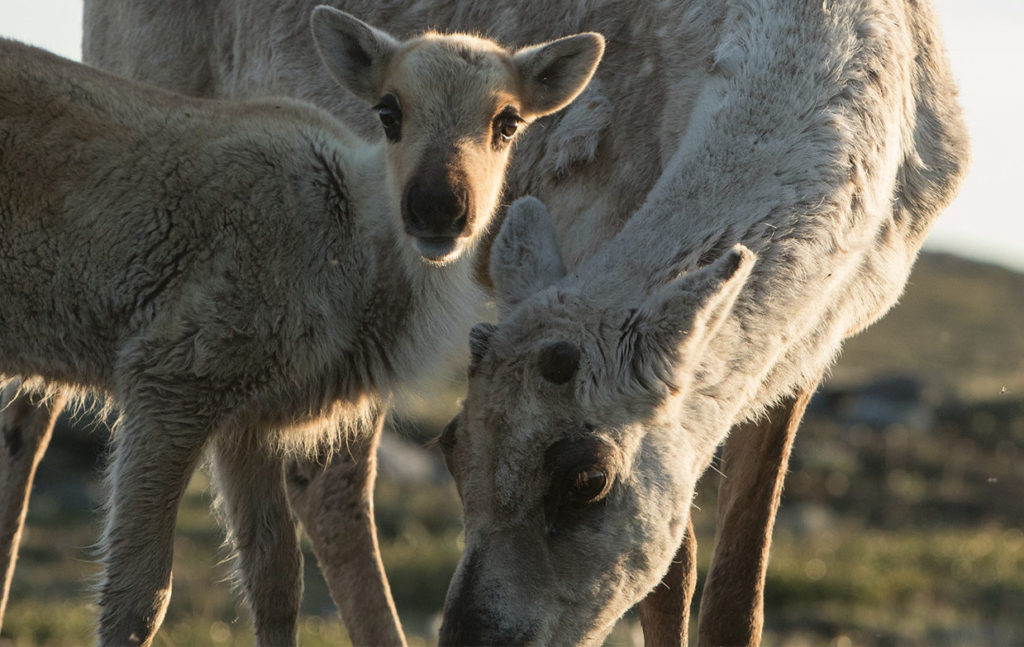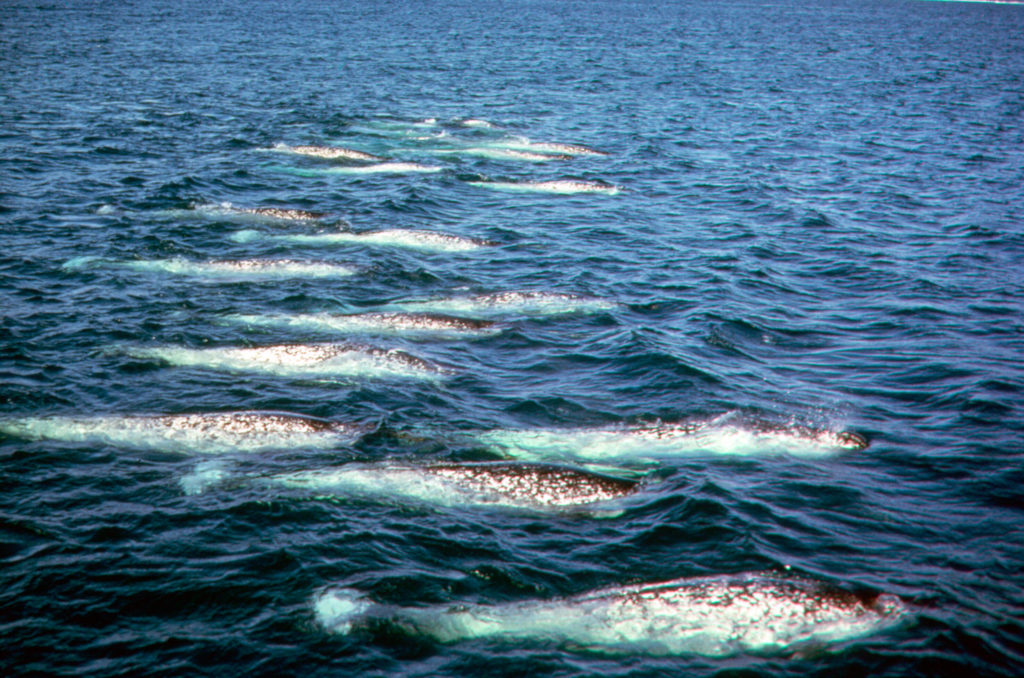Above and below the ice, Arctic species need your help
Giving Tuesday is a growing global movement dedicated to giving back after Black Friday and Cyber Monday. From now until midnight on Nov. 29, 2022, your gift will be matched* to make twice the impact for Arctic species conservation.
The Canadian Arctic is warming even faster than we previously thought, now at four times the global average. This is putting wildlife on an increasingly dangerous course both above and below the sea ice.
Above the ice
The Dolphin and Union caribou herd — which has declined by 87 per cent from more than 30,000 individuals in 1997 to just 3,800 in 2020 — is dealing with ever-more treacherous ice conditions.
Twice a year, the herd crosses the frozen ocean from the mainland coasts of Nunavut and NWT over to Victoria Island, where they give birth. Local communities have raised concerns about the safety of this journey, chiefly the risk of ocean-faring caribou drowning as thinning ice breaks.

Through WWF-Canada’s Arctic Species Conservation Fund, we’re supporting a project with the Government of Nunavut that uses satellite telemetry to track caribou movement patterns. Data on the Dolphin and Union herd’s “range fidelity” — the places they instinctively return to year after year, such as their calving grounds, migratory corridors and wintering habitat — and how it might be changing, will help ensure that the areas caribou rely on can be conserved.
Another project with Trent University is looking at how climate change is impacting caribou foraging habitat on southeastern Victoria Island. Warmer temperatures cause more rain, which freezes over the ground and can block access to plants and berries that caribou need to survive. Caribou can still reach food under snow, but not under ice. The results of this project will help us understand the capacity of the tundra to support the long-term survival of caribou herds on their calving grounds.
Below the ice
Narwhal are more stressed than ever as industrial activity and shipping in their habitat intensifies. In fact, an ongoing, community-led Arctic Species Conservation Fund project found stress levels have increased 200 per cent in recent years!
And when narwhal are stressed, they aren’t able to devote as much energy to growth, maintenance, lactation or rest — and it can lead to poor body condition. WWF-Canada is supporting a project measuring narwhal body condition, as well as research on how the impact of stress on narwhal health could impact this ice whale’s movement patterns and distribution.
When we know how narwhal are responding to climate change, we can then take the right actions to safeguard them. With 90 per cent of the world’s narwhal summering in Canadian waters, we have a global responsibility to do just that.

Make 2x the difference this Giving Tuesday
What we do now will determine their future.
Together, we can ensure some of Canada’s most iconic species remain a thriving part of the Arctic. By supporting WWF-Canada’s Arctic Species Conservation Fund this Giving Tuesday, you’re making high-quality research that brings together Inuit Qaujimajatuqangit (Inuit knowledge) and science possible.
Since the fund started in 2016, WWF-Canada has supported more than 80 projects across the Canadian Arctic that have made incredible breakthroughs for wildlife, amplified the voices of northern communities, and protected critical habitats.
This Giving Tuesday, you can help safeguard the future of Arctic species above and below the ice. And when you give before midnight on Nov. 29, 2022, your gift will be matched for double the impact!



